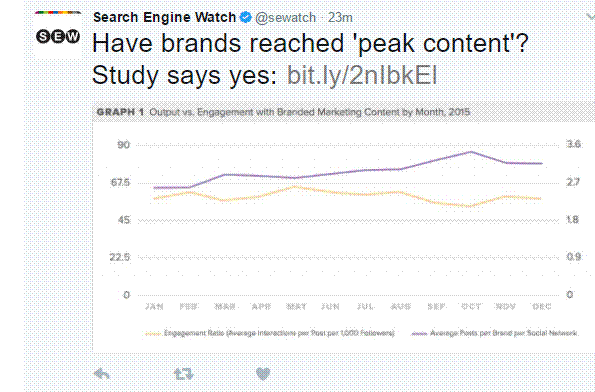Digital Marketing
What is Affiliate Marketing in Digital Marketing
Published
2 years agoon
By
admin
Introduction
In the digital age, where the internet has become an integral part of our lives, various forms of online business models have emerged. Affiliate marketing is one such model that has gained immense popularity in recent years. It’s a concept that has revolutionized the way businesses promote their products or services and how individuals can earn money online. In this comprehensive blog post, we will delve deep into the world of affiliate marketing, exploring what it is, how it works, its benefits, and how you can get started as an affiliate marketer. So, let’s embark on this journey to demystify the fascinating world of affiliate marketing.
Chapter 1: Understanding Affiliate Marketing in simple words
1.1 What is Affiliate Marketing Business?
Affiliate marketing is a performance-based online marketing strategy where businesses reward individuals or affiliates for promoting their products or services and driving sales or other desired actions through the affiliate’s marketing efforts. It’s essentially a symbiotic relationship where both parties benefit. The business gains more exposure and customers, while the affiliate earns a commission for every sale or action generated through their promotional efforts.
1.2 How Does Affiliate Marketing Work?
The affiliate marketing process typically involves the following key players:
- Merchants (Advertisers): These are businesses or companies that have products or services they want to sell online. They are the ones looking to expand their customer base and increase sales.
- Affiliates (Publishers): Affiliates are individuals or entities that partner with merchants to promote their products or services. They use various marketing channels such as websites, blogs, social media, email marketing, or YouTube channels to reach potential customers.
- Customers (Consumers): Customers are the end-users who purchase products or services through the affiliate’s promotional efforts. They are the ultimate target of the marketing campaign.
- Affiliate Networks: In many cases, affiliate marketing operates through affiliate networks, which act as intermediaries between merchants and affiliates. These networks provide tracking and reporting tools, facilitate payments, and help connect affiliates with suitable merchants.
1.3 The Affiliate Marketing for Beginners Process
The affiliate marketing process typically involves the following steps:
- Affiliate Selection: An affiliate selects a product or service to promote based on their niche, interests, or target audience.
- Promotion: The affiliate creates content or marketing materials to promote the chosen product or service. This can include blog posts, videos, social media posts, and more.
- Tracking: To ensure that affiliates receive their commissions, tracking mechanisms like affiliate links and cookies are used to monitor the traffic and sales generated through the affiliate’s promotional efforts.
- Conversion: When a customer clicks on the affiliate’s unique link and makes a purchase or performs the desired action (e.g., signing up for a newsletter), it is counted as a conversion.
- Commission: Affiliates earn a commission on each successful conversion. The commission structure varies and may be a percentage of the sale or a fixed amount.
- Payment: Payment to affiliates is typically processed by the merchant or the affiliate network, depending on the arrangement. Payments can be made on a weekly, bi-weekly, or monthly basis.
Chapter 2: Benefits of Affiliate Marketing
2.1 Benefits for Merchants
- Cost-Effective: Affiliate marketing is a cost-effective advertising strategy, as merchants only pay commissions when a sale or action occurs. This reduces the risk of advertising spend with no guaranteed returns.
- Wider Reach: Affiliates can help businesses reach a wider and more diverse audience, tapping into niches and markets that the merchant may not have reached otherwise.
- Performance-Based: Since payment is based on actual results, affiliate marketing incentivizes affiliates to generate quality leads and sales.
2.2 Benefits for Affiliates
- Low Startup Costs: Affiliate marketing requires minimal upfront investment. Affiliates can get started with a website, blog, or social media account, and there’s no need to create or maintain products.
- Passive Income: Once an affiliate’s content is published, it can continue to generate income over time, even while they sleep or focus on other projects.
- Flexibility: Affiliates have the flexibility to choose the products or services they promote and create content in their preferred style.
- No Customer Support: Affiliates don’t need to handle customer support, product fulfillment, or inventory management, as these tasks are the responsibility of the merchant.
2.3 Benefits for Customers
- Access to Valuable Information: Customers often rely on affiliates for detailed product reviews, comparisons, and recommendations, which can help them make informed purchasing decisions.
- Special Offers: Affiliates may offer exclusive discounts or bonuses to their audience, providing added value to customers.
Chapter 3: Types of Affiliate Marketing
Affiliate marketing is a versatile model with various forms, each catering to different niches and audiences. Here are some common types of affiliate marketing:
3.1 Content Affiliate Marketing
Content affiliates primarily use blogs, websites, and other content platforms to promote products or services. They create in-depth reviews, tutorials, and informative content to engage their audience and drive conversions.
3.2 Social Media Affiliate Marketing
Social media affiliates leverage platforms like Facebook, Instagram, Twitter, and Pinterest to promote products through posts, stories, and affiliate links. They often have a significant following or influence in a specific niche.
3.3 Email Marketing
Email affiliates build email lists and promote products or services to their subscribers through email marketing campaigns. They often use newsletters, product recommendations, and exclusive offers to drive conversions.
3.4 Coupon and Deal Affiliates
Coupon and deal affiliates focus on providing discounts, coupons, and special offers to their audience. They typically partner with merchants to secure exclusive deals for their followers.
3.5 Review Sites
Review sites specialize in in-depth product or service reviews. They aim to provide comprehensive information to help customers make purchasing decisions. Review affiliates often rank products and recommend the best options within a niche.
Chapter 4: How to Start with Affiliate Marketing
4.1 Choose Your Niche
The first step in affiliate marketing is selecting a niche that interests you and has the potential for profitability. Consider your passion, expertise, and the needs of your target audience.
4.2 Research Affiliate Programs
Once you’ve chosen a niche, research affiliate programs related to that niche. Look for programs with competitive commissions, reliable tracking, and quality products or services.
4.3 Build a Platform
Create a platform to promote affiliate products. This could be a blog, website, YouTube channel, or social media profiles. Ensure your platform is user-friendly and provides valuable content.
4.4 Create High-Quality Content
Content is key in affiliate marketing. Produce informative, engaging, and authentic content that addresses the needs and questions of your audience. Use various formats, such as articles, videos, and infographics.
4.5 Promote Affiliate Products
Integrate affiliate links naturally into your content. Be transparent with your audience about your affiliate relationships, and only promote products or services that align with your niche and provide value.
4.6 Track and Optimize
Use tracking tools to monitor the performance of your affiliate links and campaigns. Analyze the data to identify what’s working and what needs improvement. Optimize your strategies accordingly.
4.7 Build an Audience
Focus on growing your audience through organic and paid methods. Engage with your audience, respond to comments, and build a loyal community around your platform.
4.8 Scale Your Efforts
As you gain experience and confidence, consider scaling your affiliate marketing efforts. Explore new niches, diversify your income sources, and collaborate with other affiliates or influencers.
Chapter 5: Challenges in Affiliate Marketing
While affiliate marketing offers numerous benefits, it also comes with its fair share of challenges:
5.1 Competition
Affiliate marketing is a highly competitive field. There may be many affiliates promoting the same products, making it crucial to differentiate yourself and your content.
5.2 Changing Algorithms
Search engines and social media platforms frequently update their algorithms, affecting the visibility of affiliate content. Affiliates must stay informed and adapt to these changes.
5.3 Affiliate Disclosure
To maintain trust with their audience and comply with legal requirements, affiliates must disclose their affiliate relationships clearly. Failing to do so can lead to credibility issues.
5.4 Payment Delays
Some affiliate programs or networks may have payment delays or minimum payout thresholds. Affiliates should be aware of these terms and plan their finances accordingly.
Chapter 6: Success Stories in Affiliate Marketing
To inspire aspiring affiliate marketers, let’s explore a few success stories from the affiliate marketing world:
6.1 Pat Flynn – Smart Passive Income
Pat Flynn is a well-known affiliate marketer who started his journey with a niche website and diversified his income sources over the years. His Smart Passive Income blog and podcast share valuable insights into the world of online business and affiliate marketing.
6.2 Michelle Schroeder-Gardner – Making Sense of Cents
Michelle Schroeder-Gardner transformed her personal finance blog, Making Sense of Cents, into a successful affiliate marketing platform. She earns a substantial income by promoting financial products and courses.
6.3 Wirecutter – Product Review Site
Wirecutter is a product review site owned by The New York Times. It generates revenue primarily through affiliate marketing by recommending the best products to its readers. Its success showcases the power of in-depth reviews.
Chapter 7: Legal and Ethical Considerations
7.1 Affiliate Disclosure
Affiliates are legally required to disclose their affiliate relationships to their audience. Clear and conspicuous disclosures must be made in a way that readers can easily understand.
7.2 Compliance with Regulations
Affiliates should be aware of regional and industry-specific regulations that may apply to their promotions. For example, promoting health or financial products often involves additional compliance requirements.
7.3 Ethical Marketing
Maintaining ethical standards is crucial in affiliate marketing. Affiliates should prioritize transparency, honesty, and the best interests of their audience when promoting products or services.
Chapter 8: Future Trends in Affiliate Marketing
The affiliate marketing landscape continues to evolve. Here are some future trends to watch out for:
8.1 Influencer Collaboration
Affiliate marketing is increasingly intersecting with influencer marketing. Brands are collaborating with influencers who have large, engaged audiences to promote their products.
8.2 Video Content
Video content, especially on platforms like YouTube and TikTok, is becoming a dominant medium for affiliate marketing. Video reviews and tutorials are highly engaging and effective.
8.3 AI and Data Analytics
Advancements in artificial intelligence and data analytics are helping affiliates optimize their strategies. AI can assist in content generation, personalization, and audience targeting.
Conclusion
Affiliate marketing is a dynamic and ever-growing industry that offers opportunities for both businesses and individuals. It’s a win-win model where merchants gain more customers, affiliates earn commissions, and customers receive valuable recommendations. To succeed in affiliate marketing, one must choose a niche wisely, create high-quality content, and stay informed about industry trends and regulations. Whether you’re looking to start a side hustle or build a full-time online business, affiliate marketing has the potential to unlock a world of possibilities in the digital realm. So, take the knowledge you’ve gained from this blog and embark on your affiliate marketing journey with confidence and enthusiasm.
You may like
Digital Marketing
What Are the Most Effective Digital Marketing Strategies?
Published
3 weeks agoon
June 20, 2025By
admin
In today’s hyper-connected digital world, standing out amidst the noise is one of the biggest challenges for businesses. With more than 5 billion internet users globally, the potential reach of digital marketing has never been greater. Yet, the question remains: what are the most effective digital marketing strategies that truly drive results?
From startups to established enterprises, businesses are constantly exploring ways to maximize their online visibility, engage their audience, and boost conversions. Whether you’re a small business owner or a digital marketing professional, understanding how to leverage the right strategy can be the difference between fading into obscurity and becoming a household name.
This blog will break down everything you need to know about creating a powerful digital marketing strategy, including actionable tips and examples of successful campaigns that made waves.
What is a Digital Marketing Strategy?
A digital marketing strategy is a comprehensive plan that outlines how a business will use digital channels to achieve its marketing goals. These channels can include search engines, social media platforms, email, websites, and more. The strategy serves as a roadmap that helps businesses:
- Identify their target audience
- Set measurable objectives
- Allocate resources efficiently
- Analyze and optimize campaign performance
A successful digital marketing strategy is customer-centric, data-driven, and aligned with the overall business goals. It’s not just about being present online but about being strategically present.
4 Tips for Creating an Effective Digital Strategy
Creating an effective digital marketing strategy requires thoughtful planning and ongoing optimization. Here are four crucial tips to guide you:
1. Understand Your Customer
Everything begins with the customer. Your digital marketing strategy should revolve around understanding:
- Who your customers are
- What their needs and pain points are
- Where they spend their time online
- How they make purchasing decisions
Use tools like Google Analytics, Facebook Audience Insights, and customer surveys to gather demographic and psychographic data. Develop detailed buyer personas to humanize your audience and guide your messaging.
2. Audit & Assess
Before crafting new strategies, conduct a comprehensive audit of your current marketing efforts. Assess:
- Website performance (load speed, mobile responsiveness, user experience)
- Content quality and reach
- SEO health (backlinks, keywords, rankings)
- Social media engagement
- Email open and click-through rates
A SWOT analysis (Strengths, Weaknesses, Opportunities, Threats) is also helpful to identify where you stand and where to improve.
3. Focus on the End Result
Your strategy should be goal-oriented. Ask yourself:
- Are you trying to increase brand awareness?
- Do you want to generate more leads?
- Are you focused on boosting online sales?
Use SMART goals (Specific, Measurable, Achievable, Relevant, Time-bound) to give your campaigns a clear direction. For example: “Increase website traffic by 20% in 3 months through SEO and social media marketing.”
4. Review and Refine
Digital marketing is not a set-it-and-forget-it process. Regularly monitor KPIs such as:
- Conversion rates
- Bounce rates
- Cost-per-click (CPC)
- Return on investment (ROI)
Use analytics tools like Google Analytics, SEMrush, HubSpot, and social media insights to evaluate performance and refine your strategies accordingly.
What Are the Most Effective Digital Marketing Strategies?
Here’s a deep dive into the most effective digital marketing strategies that are driving success in 2025:
Content Marketing
Content marketing is about creating and distributing valuable, relevant, and consistent content to attract and retain a clearly defined audience.
Why it’s effective:
- Builds authority and trust
- Enhances SEO
- Generates organic traffic
- Encourages engagement
Examples:
- Blog posts
- E-books
- Infographics
- Webinars
- Case studies
Brands like HubSpot and Neil Patel have built entire empires through content marketing.
Social Media Marketing
Social media marketing leverages platforms like Facebook, Instagram, LinkedIn, and TikTok to connect with audiences, build brands, and drive website traffic.
Why it’s effective:
- Builds communities
- Encourages direct interaction
- Supports content distribution
- Provides real-time feedback
Best practices:
- Post consistently
- Use visuals and video
- Engage with comments and DMs
- Run contests or giveaways
Nike and Wendy’s are known for their engaging and witty social media presence.
SEO (Search Engine Optimization)
SEO is the practice of optimizing your website to rank higher on search engines like Google.
Why it’s effective:
- Increases visibility
- Drives targeted organic traffic
- Builds long-term ROI
Core elements of SEO:
- Keyword research
- On-page optimization
- Technical SEO
- Backlink building
Companies like Moz and Ahrefs not only teach SEO but also dominate search engine rankings.
Paid Advertising
Paid advertising involves placing ads on search engines, social media, or other platforms to drive traffic or conversions.
Types include:
- Google Ads (Search and Display)
- Facebook & Instagram Ads
- LinkedIn Sponsored Content
- YouTube Ads
Why it’s effective:
- Instant visibility
- Highly targeted
- Scalable
With the right budget and targeting, brands can quickly amplify their reach and revenue.
Influencer Marketing
Influencer marketing uses endorsements from individuals with a dedicated social following to promote products or services.
Why it’s effective:
- Builds trust and authenticity
- Reaches niche audiences
- Boosts engagement
Platforms like Instagram and TikTok are especially powerful for influencer campaigns. Brands like Fashion Nova and Gymshark have grown massively through micro and macro influencer collaborations.
Email Marketing
Email marketing remains one of the most powerful tools in the digital arsenal, offering direct access to your audience’s inbox.
Why it’s effective:
- Cost-effective
- Personalized
- Great for nurturing leads
Email types include:
- Newsletters
- Product announcements
- Abandoned cart emails
- Loyalty program promotions
Brands like Amazon and Spotify use sophisticated email segmentation and automation to engage customers at every stage of the journey.
Examples of Successful Digital Marketing Strategies
- Coca-Cola’s Share a Coke Campaign
- Customized bottles with common names led to viral social media sharing.
- Utilized user-generated content and strong personalization.
- Airbnb’s Instagram Strategy
- Used user-generated travel content to build brand credibility.
- Focused on stunning visuals and emotional storytelling.
- Dove’s Real Beauty Campaign
- Focused on emotional appeal and authenticity.
- Combined video content with social media outreach.
- Spotify Wrapped
- Personalized year-end playlists encouraged massive social sharing.
- Capitalized on data storytelling and FOMO.
- GoPro’s User-Generated Content
- Encouraged customers to share adventurous videos using GoPro cameras.
- Built a strong community and brand loyalty.
Understanding Your Digital Marketing Strategy
A great digital marketing strategy is a living document. It should evolve with your business and customer needs.
Ask yourself regularly:
- Are your channels performing?
- Are you reaching the right audience?
- What’s working and what’s not?
Use A/B testing, heat maps, and analytics dashboards to continually improve. Integrate CRM systems and marketing automation tools to streamline your efforts and track every interaction.
Become a Strategic Digital Marketer
To be a strategic digital marketer in 2025, you must:
- Think holistically: Integrate various strategies to create a seamless customer experience.
- Stay updated: Digital trends evolve quickly. Subscribe to industry blogs, attend webinars, and take courses.
- Measure everything: Data is your compass. Make decisions based on insights, not assumptions.
- Test and learn: Embrace experimentation. Every failure is a learning opportunity.
Remember, the most effective strategy is the one that aligns with your audience, your goals, and your brand.
Final Thoughts
The digital landscape is dynamic, but with the right strategies, you can navigate it successfully. Whether you’re relying on SEO, content marketing, paid ads, or social media, always put your customer first and measure your success continuously.
Now that you understand what the most effective digital marketing strategies are, it’s time to build your own customized roadmap. Stay curious, be bold, and don’t be afraid to pivot when needed. Success in digital marketing isn’t about following trends—it’s about mastering strategy.
Digital Marketing
10 Tips for Optimizing Images for SEO
Published
3 months agoon
April 23, 2025By
admin
In the realm of digital marketing and search engine optimization (SEO), images play a crucial role in enhancing user experience, conveying information, and driving traffic to your website. However, simply adding images to your web pages is not enough; optimizing them for search engines is equally important. Image optimization can significantly impact your website’s visibility in search engine results pages (SERPs) and overall SEO performance. In this article, we’ll explore ten essential tips for optimizing images to improve your website’s SEO.
1.Choose the Right Image Format:
Selecting the appropriate image format is the first step in image optimization. The most common image formats for the web are JPEG, PNG, and GIF. JPEG is suitable for photographs and complex images with many colors, while PNG is ideal for images with transparent backgrounds or crisp edges, such as logos or icons. GIFs are best for animations. By choosing the right format, you can ensure that your images are visually appealing and load quickly, which is crucial for SEO.
2.Optimize Image Size and Compression:
Large image files can slow down your website’s loading speed, negatively impacting user experience and SEO. Therefore, it’s essential to resize and compress your images without compromising their quality. Tools like Adobe Photoshop, GIMP, or online services like TinyPNG and JPEG Optimizer can help you reduce image file sizes while maintaining visual integrity. Aim for a balance between image quality and file size to improve page loading times and SEO performance.
3.Use Descriptive File Names:
When saving images for the web, avoid generic file names like “image123.jpg” or “photo1.png.” Instead, use descriptive, keyword-rich file names that accurately reflect the content of the image. For example, if you’re uploading a picture of a beach sunset, a file name like “beach-sunset.jpg” is more informative and SEO-friendly. Descriptive file names not only help search engines understand your image content but also improve accessibility for visually impaired users who rely on screen readers.
4.Utilize Alt Text:
Alt text, short for alternative text, is a crucial element of image SEO. It provides a textual description of an image, which is displayed if the image fails to load or for users who rely on screen readers. Including relevant keywords in your alt text can improve your image’s visibility in image search results and contribute to your overall SEO efforts. However, avoid keyword stuffing and ensure that your alt text accurately describes the image content for a better user experience.
5.Write Informative Image Captions:
Image captions are another opportunity to optimize your images for SEO. Captions provide additional context and relevance to your images, enhancing both user experience and search engine visibility. When writing image captions, be concise yet descriptive, and include relevant keywords where appropriate. Captions can also encourage users to engage with your content and improve dwell time on your website, which are positive signals for SEO.
6.Implement Image Structured Data:
Structured data, also known as schema markup, helps search engines understand the content and context of your web pages, including images. By implementing image structured data, you can provide search engines with additional information about your images, such as the subject, location, or author. This can improve the likelihood of your images appearing in rich snippets or image carousels in search results, enhancing visibility and click-through rates.
7.Optimize Image Titles and Headings:
In addition to alt text and captions, optimize the titles and headings associated with your images for SEO. Use descriptive, keyword-rich titles and headings that accurately reflect the image content and context within the surrounding text. Incorporating relevant keywords in your image titles and headings can improve the overall relevance and authority of your web pages, leading to higher rankings in search results.
8.Consider Image Placement and Context:
The placement and context of your images within your web pages can impact their SEO effectiveness. Ensure that your images are strategically placed within relevant content sections to enhance user engagement and comprehension. Use images to break up large blocks of text, illustrate key points, and enhance the overall visual appeal of your content. By integrating images seamlessly into your web pages, you can improve user experience and SEO performance.
9.Opt for Responsive Images:
With the increasing prevalence of mobile devices, it’s essential to optimize your images for various screen sizes and resolutions. Responsive images adapt dynamically to different devices and screen sizes, ensuring optimal display and performance across all platforms. Implementing responsive image techniques, such as srcset attributes and CSS media queries, can improve user experience, reduce bounce rates, and boost your website’s mobile SEO rankings.
10.Monitor Image Performance and Iterate:
Finally, regularly monitor the performance of your images using web analytics tools and SEO metrics. Pay attention to metrics such as image impressions, clicks, and engagement rates to assess the effectiveness of your image optimization efforts. Use A/B testing and experimentation to refine your image optimization strategies and identify opportunities for improvement. By continuously iterating and optimizing your images, you can enhance their impact on SEO and drive better results for your website.
Conclusion:
Optimizing images for SEO is a critical aspect of modern digital marketing and website optimization. By following the ten tips outlined in this article, you can improve your website’s visibility in search engine results, enhance user experience, and drive organic traffic. From choosing the right image format to implementing structured data and monitoring performance, every aspect of image optimization plays a vital role in your overall SEO strategy. By prioritizing image optimization, you can unlock new opportunities for growth and success in the competitive online landscape.
Business
Tweet Your Way Towards Better Dental Marketing Results
Published
3 months agoon
April 22, 2025By
admin
As one of the leading social networking sites nowadays, Twitter is a good way to promote a business. Engagements and search results can be easily achieved. Through a 140-character content, you have the power to expand your business.
Retweets and Likes are mostly the forms of promotions that Twitter uses. But because Twitter uses a different method of curating the content, there is a possibility that new tweets will cover up the tweets, tweeted just minutes ago.
So, as proven time and again, Twitter is a great tool for promoting. But it isn’t a genie’s lamp that would grant you wishes for faster marketing success. Instead, it needs to have great content that is relevant to your audience.
How to use Twitter for your Dental Campaign
Social media is a great way to grow your practice with dental marketing ideas, especially if you’re looking for dental patients. Twitter in particular is a good platform to start with, as it allows you to connect and communicate with your audience in the most direct and effective way.
There are many benefits to using twitter for your dental marketing even if you are not a “techie” or a “geek”.
Here are some of them:
- Twitter provides a fast and effective way to communicate with your target audience.
- You can interact with people who might not know who you are yet. You can build relationships with potential clients.
- Twitter can help you find new customers. Use hashtags to get known by new customers who might be looking for someone exactly like you.
- Twitter helps you stay relevant and up-to-date on current trends and news affecting your industry. You can share important information regarding dental health, dentists, procedures and products with your followers.
- Twitter gives you credibility as an expert by sharing your knowledge and experience with other dental practitioners, patients and potential clients.
Twitter might be a little bird that only allows 140 characters, but if you know how to maximize its use, then you’ll expect better results.
Here are some the tips on using Twitter for your marketing strategy:
Know How to Use the Search Option Properly

A lot of Twitter users don’t know how the search options work and how to properly use the search operators to accurately get the results that they need.
Most people just randomly type keywords in the search box, but what they did not know is that Twitter will only search tweets that have all those words. The results usually show unrelated tweets, to what you intend to find.
However, to obtain better results, users should use the search operator or in between the two keywords that they are searching. And if they are using phrases to search something, it is better to use “” for better results.
From Pinned Tweet to Feature Box
Feature Box is like a lead magnet of your page that allows visitors to add to your email list – it is a form that is on the top of your homepage. You can turn your pinned tweet into a feature box by using lead generation cards and a pinned tweet.
You can create this by only making a Lead Generation Card that includes rewards for people who use or answer the form then pin the tweet to your Twitter profile, then there you have it!
This tool will come in handy in the future when you use it with other marketing tools, and you can directly download your email list with this also.
Tweet the Same Content Many Times but Tweak it a Little
The downside that Twitter has a lot of users is that recent tweets immediately are covered by other tweets. And it results in previous tweets being neglected and becomes useless.
What you can do to maximize the tweeting process to promote this is to tweet the same content a lot of times. Don’t be afraid to do it, because sometimes your second tweet will work better than your first one.
However, even if it is a good idea to tweet the same tweet a couple of times, making the text and image different each time you tweet has a higher risk of receiving tons of interest and engagement. With this also, you can check the analytics of the type of tweets and contents works well.


Your Tweets Should Look Good
Links can be a great help for contents but having long tweets can limit the character count of your tweet. Instead of tweeting the whole link, you can maximize link shorteners. With this, it also makes your tweets neater.

As Twitter keeps on changing, adding videos and images can make a great difference as well because they make your tweets more attractive instead of having dull tweets. Engagements are usually high with this kind of tweets.
Your displayed photo and header should match the business that you have. Make sure that the pictures that you are going to use have high resolutions and fits with the standard sizes that twitter has.
Even your profile bio should be presentable as it is the first thing after your picture that a visitor will look at. Make it short and exciting, like phrases that describe your business or page.
Create a Proper Tweeting Schedule
It may sound so vain, but there are appropriate hours where the engagement is higher compared to other hours of the day. You should properly study the perfect timing, and make scheduled tweets to increase awareness and engagement for your tweets. This way, a lot will be aware of your business.
Takeaway
As social media marketers, using influencer marketing enables us to learn new strategies about social media and how to connect and achieve more engagements. Knowing Twitter’s basics and setting up a profile can help you understand the advances.

The Ultimate Guide to the Best Android Strategy Games in 2025: What to Play and Why

What Are the Most Effective Digital Marketing Strategies?

Everything You Need to Know About Windows 11

The Best E commerce Platforms for Small Businesses in 2025

How to Start Coding from Zero Level with No Prior Experience

Why Great Output Doesn’t Always Mean Great Performance

Top 3 Advanced Persistent Threats and How Businesses Can Stop their Attacks

14 Actionable Tips to Improve Your Manufacturing Business

10 Tips for Optimizing Images for SEO

10 Most Profitable Businesses in India
Trending
-

 Miscellaneous3 years ago
Miscellaneous3 years agoSubnautica Below Zero Map – Know About Complete World Map and Coordinates 2021
-

 Mobile2 years ago
Mobile2 years agoVivo Company Belongs to Which Country? Vivo Made in Which Country? Is Vivo Chinese Company?
-

 Gaming2 years ago
Gaming2 years agoWhen Did the PS4 Come Out
-

 Gaming3 years ago
Gaming3 years agoWhy F95 Zone is the Leading Gaming Community?

